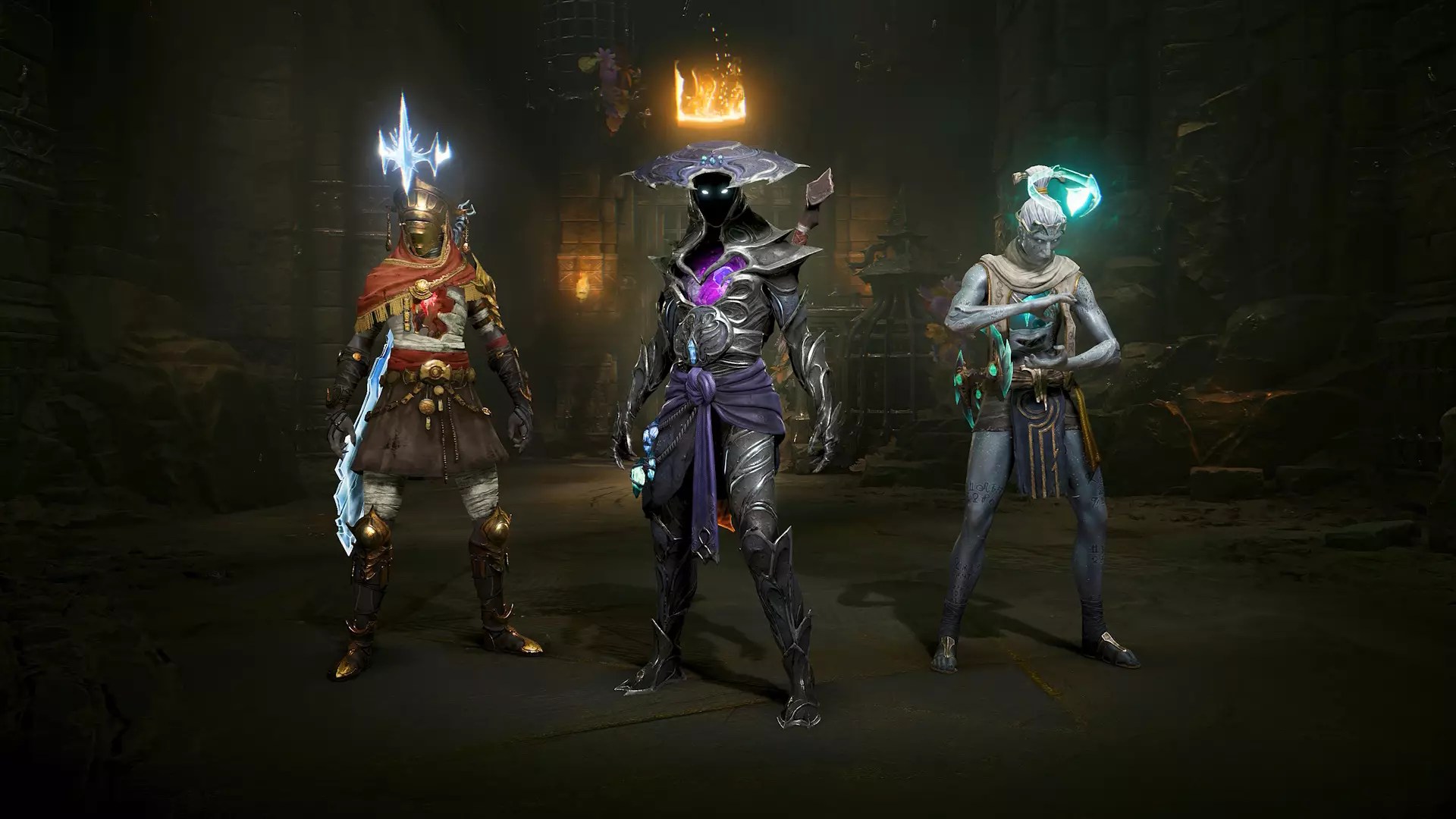In the rapidly evolving landscape of multiplayer gaming, developers are consistently seeking to push boundaries and craft experiences that resonate deeply with players craving novelty. Bonfire Studios, helmed by industry veterans Min Kim and Rob Pardo, embarks on this very quest with Arkheron—a game that promises to redefine competitive multiplayer through its innovative blend of familiar elements and groundbreaking mechanics. Rather than conforming to traditional genres, Arkheron attempts to forge a new identity, inviting players into a high-stakes, fast-paced tower climb that calls into question what competitive gaming can really be.
What makes Arkheron stand out is its audacious combination of genres and mechanics. At its core, the game borrows from the familiarity of Diablo’s isometric view, incorporating the rapid-fire abilities reminiscent of Overwatch. Meanwhile, its battle royale-inspired mode, “Ascension Royale,” peppers the experience with the tension and unpredictability of Fortnite’s last-man-standing gameplay. This mashup sparks curiosity and showcases a bold willingness to experiment—an essential quality in the pursuit of a truly innovative multiplayer experience.
The Tower as an Arena of Survival
Arkheron’s setting—a towering structure—serves as more than just a backdrop. It becomes the arena where chaos and strategy collide. The core gameplay involves teams of three ascending this ever-changing tower, fighting monsters, dodging storms, and competing for control over key beacons. Each level introduces increased difficulty, both from enemies and the scarcity of resources, culminating in a tense finale where only two teams remain on the highest floors.
This concept flips typical multiplayer dynamics on their head. Instead of team deathmatches or static battlegrounds, players are thrust into a relentless race against time, environment, and each other. The tower structure emphasizes progression, survival, and adaptability—qualities that challenge players to refine their skills continually. It integrates the thrill of climbing and conquering with the strategic depth of resource management, creating an experience that is as intense as it is engaging.
Relics: A Personalization Revolution
One of Arkheron’s most ambitious and intriguing features is its Relics system. Unlike traditional role-based games where characters are confined to specific classes, Arkheron empowers players with four distinct Relics—powerful items that bestow unique abilities. The twist? Equipping a new Relic replaces the old one, forcing players to strategically choose what powers serve them best in the current confrontation.
This mechanic injects a layer of personalization and adaptability into gameplay. Players can chase duplicates to upgrade their Relics or combine different relics into sets to unlock set bonuses, transforming into an “Eternal” with a game-changing fifth ability. However, this transformation also signifies a fixed build for the rest of the match, emphasizing strategic commitment over casual swapping. This design philosophy pushes players to think critically about their choices, fostering a deeper engagement with their loadouts and overall tactics.
Bridging Industry Experience and Innovative Design
Given the pedigree of Bonfire Studios’ founders—particularly Rob Pardo’s legendary tenure at Blizzard—expectations are high for Arkheron. While much remains under wraps, Pardo’s comments reveal a game that resists simple description, reinforcing the notion that it’s an experience best understood through participation rather than explanation. His candid admission that “you have to play it to get it” underscores the game’s depth and the challenge of conveying its essence through trailers or previews.
This stance reflects a broader industry truth: truly innovative games often defy conventional labels. Arkheron appears to embrace this complexity, aiming to cultivate a dedicated community of players willing to invest time and effort into mastering its nuances. The upcoming playtest from September 19-21 offers a glimpse into whether this gamble will pay off, but the game’s layered mechanics suggest that understanding it requires active, engaged play rather than passive observation.
A Bold Step Forward or a Gamble in the Dark?
Arkheron stands poised at the crossroads of innovation and risk. Its fusion of genres and mechanics shows a resolute ambition to challenge gaming conventions, yet the complexity and unfamiliarity could hinder adoption among more casual audiences. Still, the game’s underlying philosophy—creating a dynamic, skill-driven, customizable competitive environment—resonates strongly with gaming enthusiasts hungry for fresh experiences.
In the larger context of multiplayer evolution, Arkheron embodies a daring attempt to break free from the mold. Whether it will ultimately succeed remains to be seen, but one thing is certain: it signals a growing willingness within the industry to experiment boldly, to rethink what competitive gaming can look like in the years to come. For players craving something beyond the norm, Arkheron offers a tantalizing glimpse of what the future might hold—where strategy, skill, and innovation meet in a towering crucible of chaos.


Leave a Reply